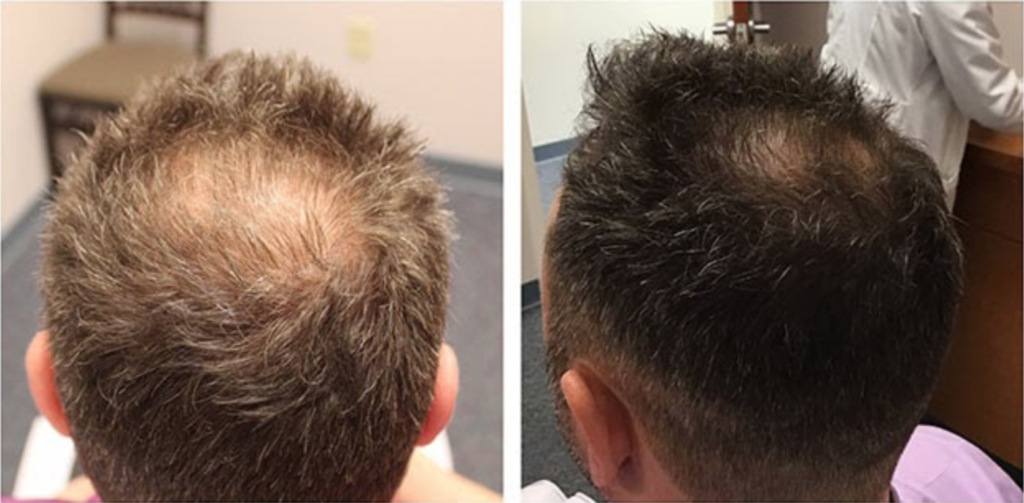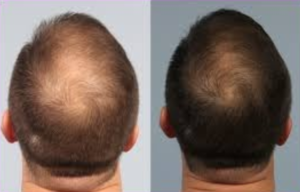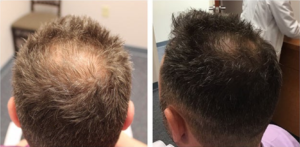PRP INJECTIONS FOR
HAIR LOSS & MORE
Retrieve your body’s healing power and use it wherever you need it to restore your tissues
SUMMARY
PRP, or platelet-rich plasma, promotes local tissue growth and thus stimulates healing of damaged tissue. PRP injectables may help regrow skin, produce collagen, regrow hair, and more. This easy and quick procedure yields fast results with long-term benefits.
WHERE
Physimed MediSpa, Montreal
ANESTHESIA
None or minimal
PAIN
Low
LENGTH OF PROCEDURE
10-20 minutes
RECOVERY TIME
Minimal
before & after gallery
Click here to view this before and after
INVASIVENESS
Low

Blood is made of red blood cells, white blood cells, and platelets that navigate within plasma. Platelets, particles that circulate within the bloodstream, have a key role in the body’s repair process. This process is our natural and inherent capacity for healing. If you are cut, the wound will close even if you do not tend to it. By extracting PRP from the blood, we are retrieving this healing power and can manipulate it to heal the areas that need it.
Within the platelets are multiple granules that contain precious growth factors. Once injected into the body, they degranulate and release the growth factors into the targeted areas. Then, the body’s reparative cell production is stimulated to heal tissue. PRP injected into soft tissue will form fibrin strand or mesh, or extracellular matrix under the skin.
Macrophages and stem cells migrate to the treated areas and help regenerate tissue and recruit more stem cells to the area.
To prepare a concentrate of PRP, we extract about 30 cc of blood from the patients and put it in a centrifuge to isolate the platelets, and the PRP injectables are ready.
You can expect to gradually see repaired skin and the effects of new collagen. Patients using PRP for hair loss will gradually see regrown, thicker hair. The procedure is easy, convenient, and has little downtime. The results are relatively rapid and give lasting, long-term benefits.
The PRP is first prepared from the sample of your blood and then reapplied. It can be applied topically, as in with micro-needling, or injected subdermally to target specific problem areas.
The recovery time depends on what area we treat, how many injections have been administered, and the type of treatment as well. Some bruising, swelling and soreness can occur that can last between 1-7 days, but you should be able to nonetheless return to your usual activities immediately. We recommend that patients avoid alcohol and cigarettes for 5 days pre- and post- treatment. Additionally, we recommend avoiding anti-inflammatories like ibuprofen and aspirin for 3 weeks post-treatment.
PRP has a variety of uses in the medical and aesthetic fields.
It is used in orthopedics to regenerate cartilage for patients that, for example, have arthritis. It can also be used to treat sexual dysfunction in both sexes to improve erections or the sexual experience and orgasm. Loose skin and poor skin texture can be treated with PRP. Finally, it can help restore healthy hair to patients with alopecia with hair loss or thinning.
Therefore, many patients with a wide array of concerns can turn to PRP.
PRP injectables can be administered throughout the body. Some common areas include the scalp for hair regrowth, the face and neck for skin concerns, certain joints for regenerating cartilage and healing connective tissue, the penis for erectile dysfunction, and finally the clitoris and G-spot in the vagina to improve sexual experience.
Since we use platelets from your body, the risks and side effects are very limited. Specifically, you will not react negatively. At the injection site, you may experience soreness and swelling for a few hours after the procedure. Bruising is rare.
PRP treatments are temporary. Tissues lose certain properties over time and with age. You will need to periodically reinject some PRP in the areas treated to maintain the integrity of the tissues.
PRP is often used in conjunction with other treatment modalities in aesthetics including micro-needling, certain laser treatments, and even neuromodulators (Botox, Nuceiva) or fillers, in which the injections are mixed together.
For more information, ask for a free consultation with an aesthetics doctor.


